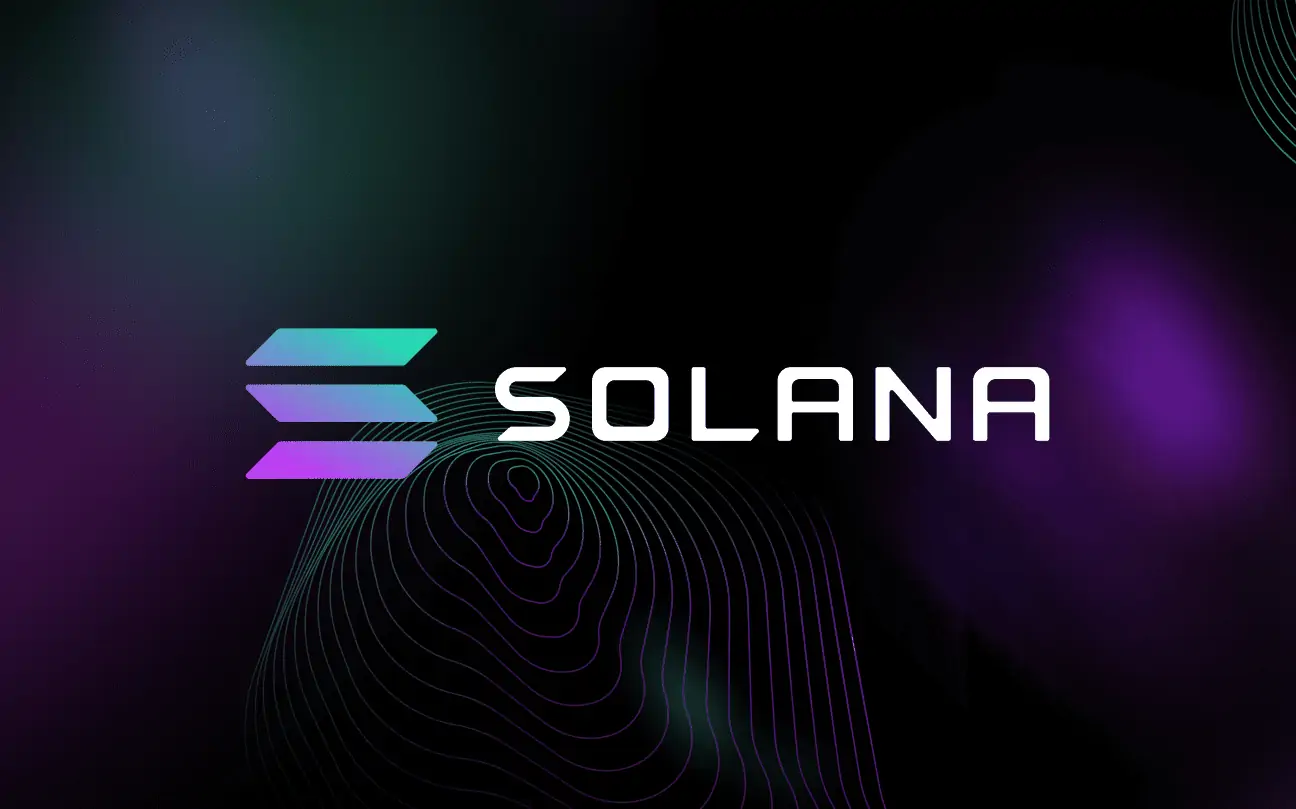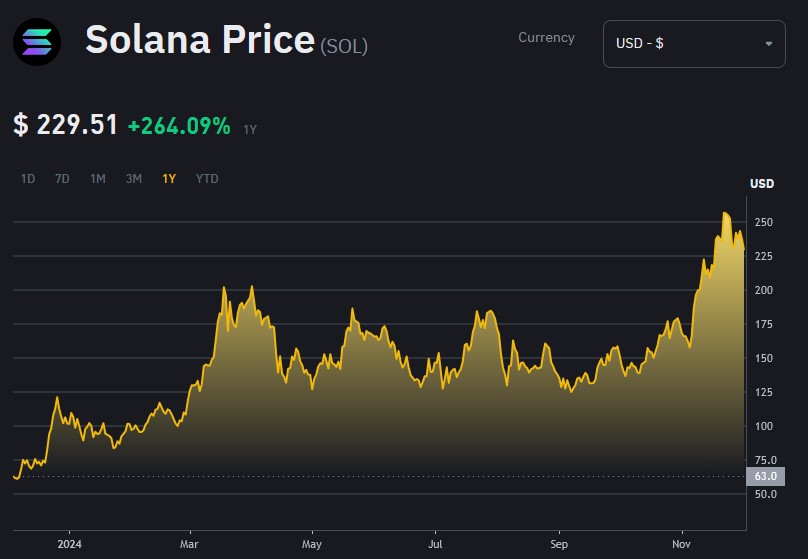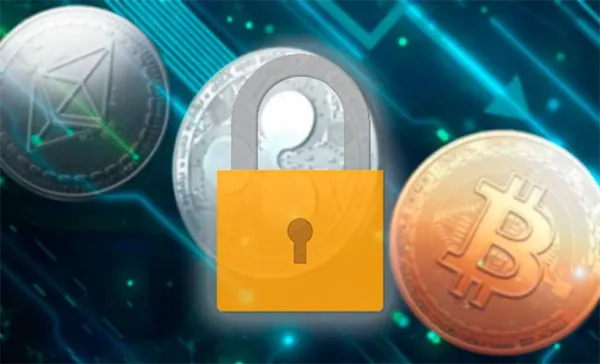
Solana Price Rises Again Amid Renewed Optimism
After months of turbulence marked by security breaches and technical setbacks, Solana (SOL) has regained upward momentum. Recently, the cryptocurrency’s price has been approaching the significant $250 mark, sparking discussions among investors and analysts about the network’s improved resilience and future potential. This surge comes after the cryptocurrency market as a whole experienced renewed enthusiasm, particularly for blockchain networks capable of handling large-scale applications efficiently.
The Turning Point for Solana
Solana’s journey in 2024 has been a testament to the cryptocurrency’s capacity for recovery. After enduring controversies surrounding decentralisation and outages that plagued its network, the ecosystem has introduced significant updates to bolster security and operational stability. The development team has been transparent about the previous flaws, which included vulnerabilities in the consensus mechanism and instances of prolonged downtime. These admissions, coupled with swift action, helped to rebuild confidence within the crypto community.
Another key factor contributing to the turnaround was the successful execution of its ‘Solana 2.0’ upgrade. This included robust new features like improved block finality times and expanded validator support. With these changes, the network has positioned itself as a more scalable and reliable platform for decentralised finance (DeFi) and gaming projects, both of which require high transaction throughput and low costs.
Key Improvements Driving Growth
Among the notable enhancements is the implementation of advanced consensus algorithms, which aim to minimise downtime and enhance transaction efficiency. Additionally, strategic partnerships with leading blockchain projects have strengthened investor confidence, reinforcing the perception of Solana as a viable and competitive option in the market. The platform has also doubled down on fostering innovation, with grants and accelerator programs aimed at attracting developers to build on its ecosystem.
Moreover, Solana’s focus on improving interoperability has opened doors to collaborations with other networks. By enabling seamless cross-chain communication, Solana is now appealing to projects that require integration with Ethereum, Binance Smart Chain, and other blockchains. These developments have further solidified its reputation as an adaptable and forward-thinking platform.
Market Factors Influencing Solana’s Price
The cryptocurrency market is notorious for its volatility, and Solana is no exception. Its recent price surge aligns with broader market trends where major cryptocurrencies like Bitcoin and Ethereum have also seen gains. This upward trajectory has been attributed to renewed interest in blockchain technologies, coupled with global economic factors favouring digital assets. Inflationary pressures and geopolitical uncertainties have driven more investors towards cryptocurrencies as a hedge, benefiting Solana among others.
Additionally, the rising demand for decentralised applications (dApps) has created a surge in blockchain activity. Solana’s ability to handle high transaction volumes at minimal costs has positioned it as a preferred choice for developers. Its ecosystem now hosts hundreds of active dApps, ranging from NFT marketplaces to DeFi platforms, which have collectively contributed to increased network activity and, subsequently, price appreciation.
Community and Investor Sentiment
Solana’s active community has played a pivotal role in its resurgence. The network’s transparency regarding past challenges, combined with proactive measures to address them, has reignited trust among investors. As a result, trading volumes have surged, reflecting increased confidence in Solana’s long-term prospects. The community-driven initiatives, such as educational campaigns and hackathons, have also helped to sustain interest and attract new users to the platform.
Investor sentiment has been further bolstered by the involvement of institutional players. Recent reports suggest that several hedge funds and crypto-focused investment firms have increased their holdings of SOL, viewing it as an undervalued asset with substantial upside potential. These developments underscore the growing mainstream acceptance of Solana and its positioning as a critical player in the blockchain industry.

Future Outlook for Solana
As Solana inches closer to the $250 milestone, the question remains: can this momentum be sustained? Analysts are cautiously optimistic, citing the platform’s ongoing commitment to innovation and user experience. The roadmap for 2025 includes several ambitious initiatives, such as further scaling solutions, decentralised identity projects, and greater energy efficiency to address environmental concerns. These steps are expected to cement Solana’s place in the top tier of blockchain platforms.
However, potential risks cannot be ignored. Market corrections, unforeseen technical issues, and regulatory challenges pose ongoing threats to the network’s stability and growth. The competitive landscape is also intensifying, with emerging blockchains like Aptos and Sui vying for market share by promoting superior technology and user incentives.
Strategic Developments to Watch
In the coming months, Solana’s focus on scaling solutions and ecosystem expansion will be critical. New developments, including decentralised finance (DeFi) integrations and non-fungible token (NFT) marketplaces, are expected to attract a broader audience, further solidifying its position in the blockchain space. The launch of Solana Pay, a decentralised payment platform, could also create significant traction among merchants and consumers looking for low-cost, high-speed alternatives to traditional payment methods.
Ultimately, Solana’s future will depend on its ability to maintain network stability, foster innovation, and address the needs of its growing user base. If successful, the network could serve as a blueprint for the next generation of blockchain technology.
Popular articles
-
 Risks 2025: Quantum Computers, Cryptocurrency Security and Whether ...
Risks 2025: Quantum Computers, Cryptocurrency Security and Whether ...Rapid progress in quantum technologies raises understandable concerns within the …
-
 Micro-Payments via Cryptocurrency: How Content and Entertainment Mo...
Micro-Payments via Cryptocurrency: How Content and Entertainment Mo...Micro-payments powered by cryptocurrency have evolved into a practical economic …
